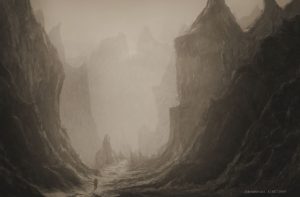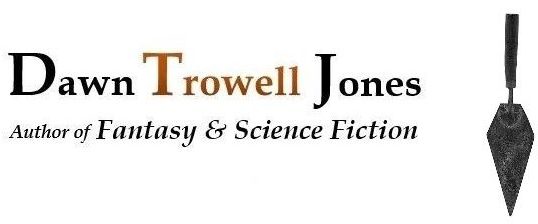 Sorry for the delay. I was too burned out. It took two NaNos, but I’ve now reached 79,458 words and finally have a complete very rough draft of I’m Your Goat! Yay! I would describe the feeling as a kind of a personal joy, like when a mountain climber reaches the top, or a marathon runner crosses the finish line. I don’t climb mountains or run marathons, but I can imagine what that must be like. Definitely a personal process. And now I’ve got to make the whole thing a not-rough draft, and that, my friend, is going to take a while. Much longer than a month.
Sorry for the delay. I was too burned out. It took two NaNos, but I’ve now reached 79,458 words and finally have a complete very rough draft of I’m Your Goat! Yay! I would describe the feeling as a kind of a personal joy, like when a mountain climber reaches the top, or a marathon runner crosses the finish line. I don’t climb mountains or run marathons, but I can imagine what that must be like. Definitely a personal process. And now I’ve got to make the whole thing a not-rough draft, and that, my friend, is going to take a while. Much longer than a month.
More detail follows for those who are interested.
Once the rush is over, of course, that’s when the anxiety really sets in. You didn’t know that? And like last year, my body has behaved a little strangely coming down off all the stress. It has to heal. Actually, both my body and mind seem to need to heal from the push, push, push against self-doubt and bumps in the road and all those “what the hell am I talking about?” moments when I lost my narrative. That happens. It’s an experience I try to avoid. The NaNo process is a really rapid pure-pantser process for me, and that’s not my way of doing things, or at least hasn’t been for the short stories and other novel I’ve written over the last decade or so.
My usual process is different. I usually vet most of my ideas in my head first, even as I go along. That means I rely heavily on memory, but this is not as difficult as you might think. More like when we memorize movie scenes we enjoy because we’ve seen them so many times. Scenes in themselves have a beginning, middle, and end. When we come up with scenes (I say ‘we’ because I suspect this is common to authors), they’re like dreams at first. A flash of imagery, maybe, with a strong emotional pull that we don’t necessarily understand. In dreams, this happens and our unconscious mind takes off with it, ordering this nugget, or seed material, with bits of ordinary life, while simultaneously flinging at it the surreal and extraordinary, sometimes just to see what sticks. What-ifs. Whimsy. Those of us who enjoy the order of a beginning, middle, and end in stories told to us (in whatever medium), tend to impose that kind of order on our dreams. Those of us who like conclusions, and who find it aesthetically pleasing the way abstract elements can come together and belong together in surprising ways, recreate that experience in our dreams.
Sometimes dreams are fleeting, but they can leave a strong emotional impression. Good stories leave a strong emotional impression because that’s the stuff they’re made of.
Scenes as authors imagine them are arguably waking dreams. First, we let the events unfold, then we ask questions that deepen the story and trigger new courses—exactly what happens in dreams.
 The pantser method is heavy on whimsy from the get-go, while the plotting method, arguably, has to make room for whimsy during the writing process. My normal method is a hybrid. I use lots of notes. I’ll see a scene play out in my head in its entirety many times before I set it down. I embellish it each time I replay it, filling in the details. A character’s words, expression, or even a piece of furniture—anything that affects my impressions of the scene deepens the story. In time, I’ve memorized the scene pretty much the same way as one might memorize a movie, scene by scene. Just as imperfectly, too. Sometimes I forget things, but those tend to be the weaker things.
The pantser method is heavy on whimsy from the get-go, while the plotting method, arguably, has to make room for whimsy during the writing process. My normal method is a hybrid. I use lots of notes. I’ll see a scene play out in my head in its entirety many times before I set it down. I embellish it each time I replay it, filling in the details. A character’s words, expression, or even a piece of furniture—anything that affects my impressions of the scene deepens the story. In time, I’ve memorized the scene pretty much the same way as one might memorize a movie, scene by scene. Just as imperfectly, too. Sometimes I forget things, but those tend to be the weaker things.
Often, when I write a scene down, I’m surprised at new details that crop up, or a tone I didn’t expect. This is where the present (when I wrote it) blends with the past (the times I replayed it). Next come the editing stages, when I tweak things one way or another, according to what feels right and seems plausible—which often reflects what I’m living at that moment. This is how to enrich a story. Some authors thrive off research: their research becomes what they’re living in the moment.
That’s my normal process.
Going into last year’s NaNo, I had two scenes, an idea, a tone, a title, and one question a writer friend had asked me when I talked to him about the project. That’s it. I didn’t even know the answer to his question yet. But I sat down with the first scene and began. As for the second scene, I felt in my bones that it belonged at the end of the story. I didn’t know why. This story was originally meant as a short story, but because my two scenes had a lot of distance between them, so many unanswered questions, they hatched a novel. I found out what happens as I went along, every day, and to my surprise, I learned what the story had been about close to the end, during this year’s NaNo. But the elements were there all along, throughout. I had no idea. That’s the unconscious, for you. That’s the work of an unconscious that likes a little symmetry.
But what does it mean, these differences in process? It’s almost as if I’ve done the whole thing backwards. Before, it was the little pieces that slipped in during the writing phase that often surprised me, but with this story, the whole thing has been a surprise. I’ll have to pull out what doesn’t carry weight, so to speak, and I’ll have to bring forward the organizing threads that are there—I was awfully relieved to discover they’re there!—and make them stronger. Dialogue was huge in this. It was almost as if I heard the story more than saw it. In the past I’ve been more visual. But don’t get me wrong, there are some visuals that seem to be pretty sticky, pretty strong—you know, flashback kind of strong—so that’s a relief, too.
What you’re witnessing is an author talking about a story in one of its earliest stages. Not infancy, but possibly adolescence.
With that said, at some point we all have to write a blurb. This is not my strong suit, but here goes my first attempt:
I’m Your Goat (dark speculative fiction): Q-bit coder Tamr Smythe and metaphysics-priest Weiyuan Gao come together after Tamr discovers officials have kept a terrible secret from the citizens of Tethys. But the people of Tethys are nursing their own secret, one that could change humanity forever. For the hell of it, some influences while I was writing the first rough draft of I’m Your Goat:
For the hell of it, some influences while I was writing the first rough draft of I’m Your Goat:
Do Androids Dream of Electric Sheep (specifically, the Merging with Mercer aspect); strangely, I kept thinking of the 1999 Polanski movie Ninth Gate; Das Glasperlenspiel by Hermann Hesse; and Kafka’s The Citadel. Just before and during, I read Margaret Atwood’s Blind Assassins and David Mitchell’s Ghostwritten, bits of Jung’s collective writings on Alchemy, and some of Nancy Kress’s best-of short-story collection. Articles on art and science. I listened to Tangerine Dream’s Ricochet, Sabled Sun’s Signals IV-VI, Atrium Carceri’s Codex and Cell Block, a compilation with pieces by Zoviet France, Jim O’Rourke, and The Hafler Trio (respectively, “Eleven Drops,” “Tacere Fas,” and “Starfall 22.9”). Here are some other observations I had during National Novel Writing Month:
Here are some other observations I had during National Novel Writing Month:
Forget about setting up a cot in your office if you have cats: This may be self-evident, unless you want a cot for cats.
Writing overcaffeinated is a bad idea: Caffeine keeps you going, probably a must-have, but too much makes it hard to hold onto a thought long enough to set it down.
Writing inebriated is a bad idea: I tried it a few times last year, with thirty minutes to go in the day, when I felt stumped. One shot of liquor. I did finish what I was working on, but it wasn’t pretty. Tried it one day during this year’s NaNo when I was in pain and needed to keep going. It worked. I kept going, but I caught myself trying to write the same sentence twice. And don’t forget, you still have to function the next day.
Journaling is a good idea: I can’t emphasize this enough. It’s companionship when you feel alone, and it’s a safe place for all those ideas that aren’t quite ready yet—the grand vision, if you will. When I was twenty, a professor treated me to dinner and asked me what I wanted to do with my life. I shrugged, sad and lost, and said what I really wanted was to write novels. She asked if I kept a journal. I said I didn’t, but used to when I was in high school. She said I’d better get started. Every successful writer she’d ever heard of had kept a journal. So, I started up again. I had a relatively dry decade in my thirties—not much journaling then, just new careers, newly a step-mom, law school, etc.—but I never really stopped. That’s a lot of practice. You can have that, too.
One final point: Part of the growth process as a writer, as we all know, involves learning when we’re doing things a little off—or outright wonky, to be blunt—but a less-emphasized but equally important aspect of growth is learning how to recognize when we’re doing things right. I love that. The learning never ends. Perfect!
I’m always at the developmental stage where I am. No more, no less. I hoped in setting this down to give you who’re thinking about trying NaNoWriMo a taste of what it’s like. National Novel Writing Month is technically a competition, but I’m not into that, and I’m not sure that’s the right attitude for long-term success. I don’t know. I’d treat your project like a mountain to climb or a marathon to run, which takes constant practice, in bits and pieces, then longer dedicated stretches. Give your project permission to snowball as you build up stamina. For those who say life gets in the way, I disagree. Our individual lives are the greatest artwork we will ever create. Life’s not in the way, it’s everything we stand for and everybody we care about. If you want your life to be more writer-heavy, remember the mountain climber who reached the peak, or the marathon runner who reached the finish line. There will be tradeoffs. But you’re smart. Whatever you really want, you’ll find. You’ll figure it out.
Just a little affirmation to brighten your day.

